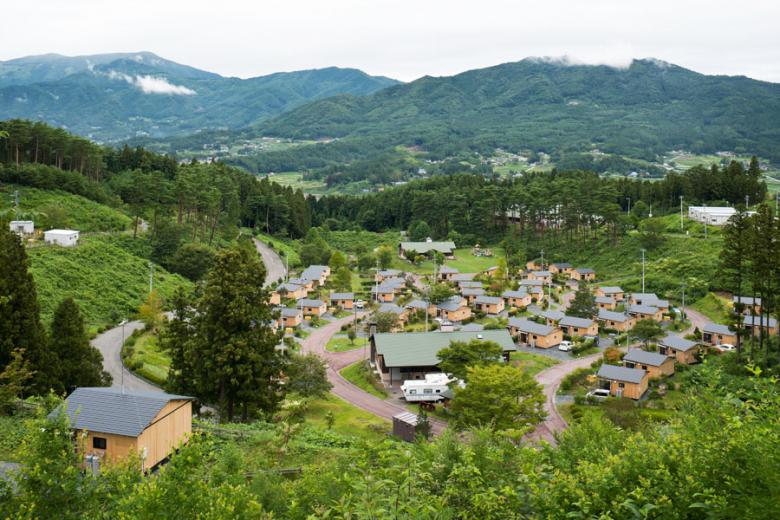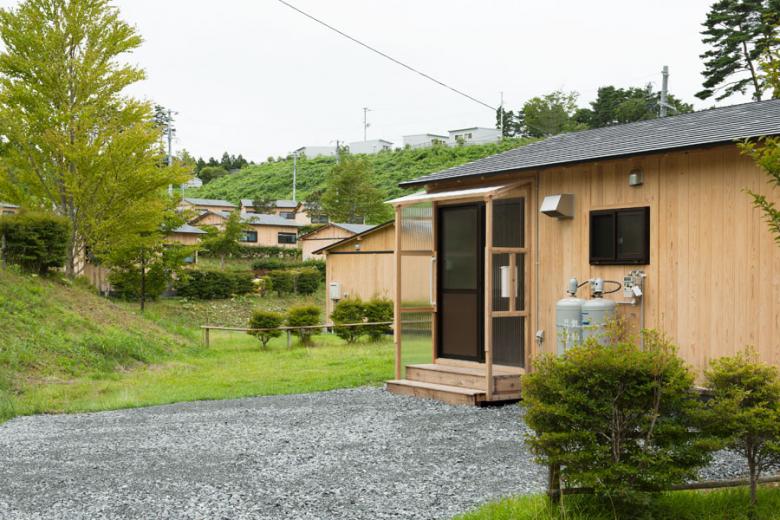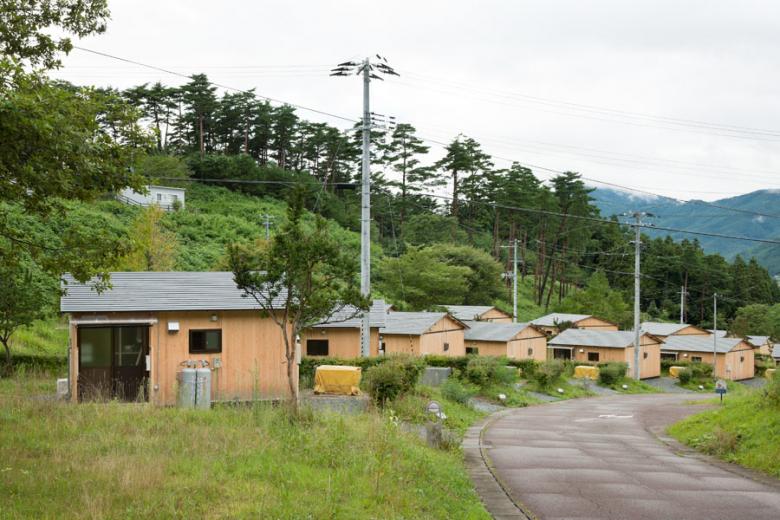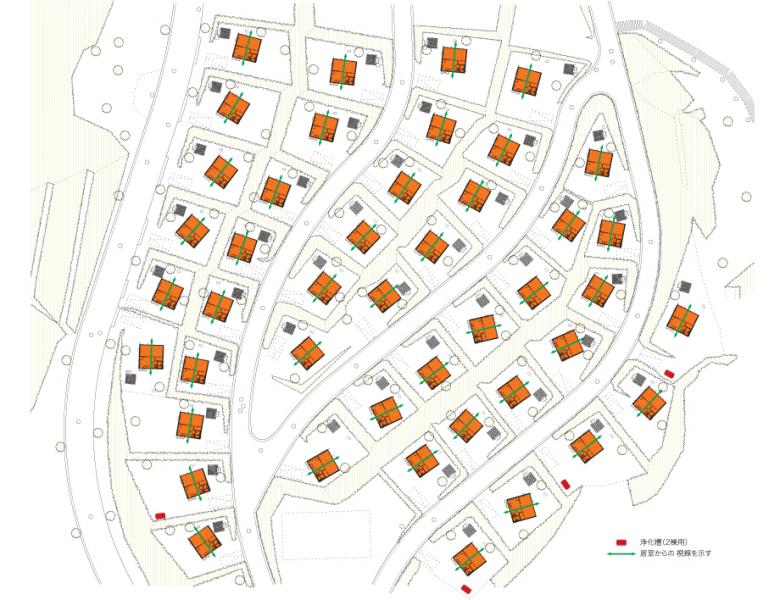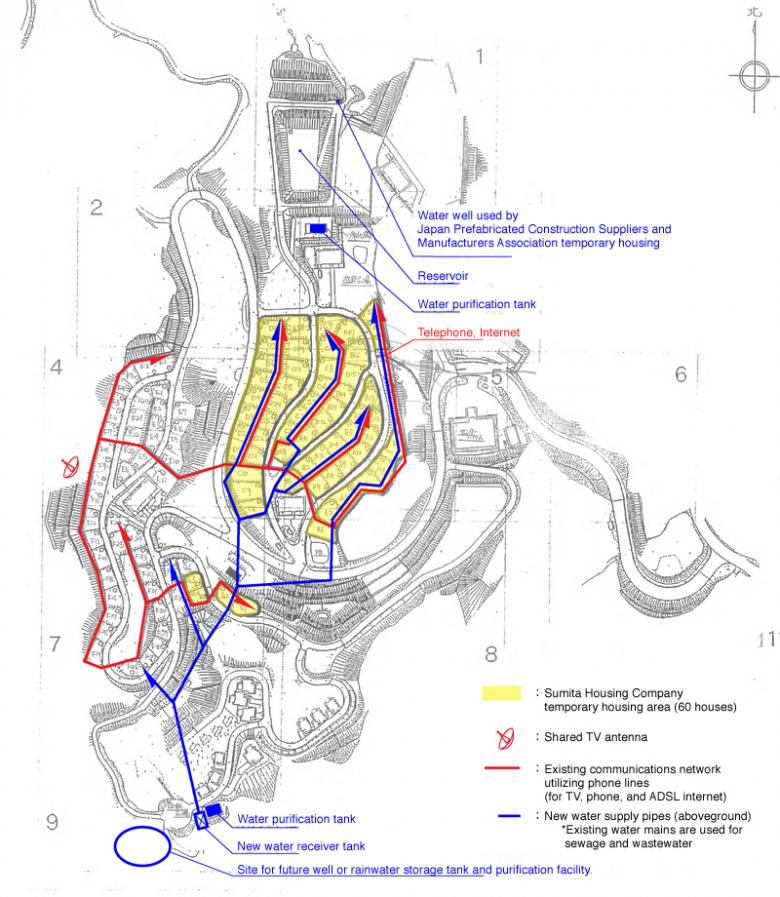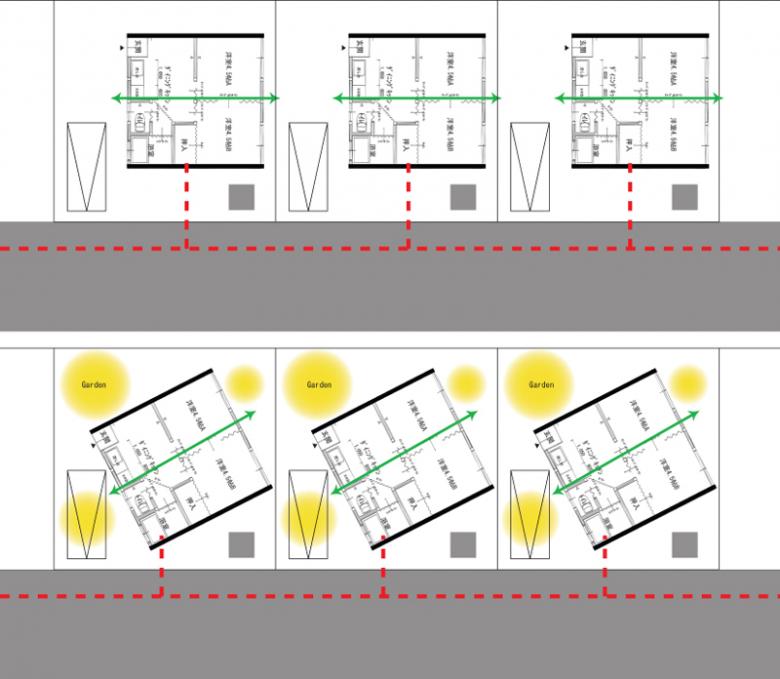Designing the Reconstruction
Designing the Reconstruction
23. December 2011
When a massive tsunami hit the northeastern coast of Japan this March, the city of Rikuzentakata in Iwate prefecture suffered catastrophic damage and lost near all its functionality as a city. In the aftermath temporary housing was built at a local auto-camp site. The detached houses, constructed using local timber and traditional carpentry techniques, were designed and built by Sumita Housing, a company based in the neighboring town of Sumita. Meanwhile, confronted with the disaster, Tokyo-based architects Daisuke Sugawara and Masayuki Harada were asking themselves what they could do to help. They got involved by working together with Sumita Housing on infrastructure and site planning for the Rikuzentakata temporary housing.
As Japan’s architecture community mobilizes to support the recovery in Tohoku, Sugawara and Harada are among those reassessing the role of architects in society. Japan-architects.com’s Yuna Yagi talked to them about their work.
How did you get involved with this project?
Sugawara : Following the disaster, as we were discussing and researching what we could do as architects to help, we learned about efforts by the Sumita town government and Sumita Housing to build temporary housing out of wood. When we went up to that area as volunteers to help with the cleanup, we were able to visit the company and learn a lot about their temporary housing and the disaster overall. After that, Sumita Housing was commissioned to build a portion of the temporary houses for Rikuzentakata, and they asked us to help out with the infrastructure and site planning.
How did you go about drawing up the master plan?
Harada: The lot selected as the site for the temporary housing is located in an auto camp on the east side of Rikuzentakata. The sloping grounds are divided into a number of small parcels with trees growing on them and a road running through. In order to preserve the surrounding natural environment, we decided not to lay new infrastructure but rather searched for a way to make use of what was already there. For houses to function, they need water lines, electricity, and ties to the communication network. Some of the existing infrastructure could be used and some couldn’t. We selected the elements that would meet the demands of the temporary village and proposed a plan that could be achieved on a short deadline, while keeping in mind the fact that the site would eventually return to its original function as an auto camp.
What about the layout of the buildings?
Sugawara: The shape of the individual housing units had already been decided when we got involved. But through their layout, we thought we might be able to mediate the relationship with the surrounding houses and environment, and create a village-like atmosphere. What we ended up doing was adjust the angle of each house so the residents’ lines of site wouldn’t cross, while at the same time creating a cohesive outdoor space. With this layout, the residents were able to interact with each other through the garden spaces while still maintaining their privacy. The plan is also extremely functional in terms of minimizing distances between elements of the infrastructure and allowing buffer spaces around the existing trees and infrastructure.
I think the way architects can be of the most use during the reconstruction is not by providing plans for lots of houses, but instead by improving quality of life through seemingly straightforward techniques. That’s why I focused on site planning for temporary housing developments as soon as the disaster happened. The village-like arrangement we created for this project was born out of a set of seemingly obvious site manipulations, but I think we were able to do quite a good job of maximizing functionality.
What’s important for a village is not that each element be planned out from a bird’s eye point of view, but that they each make sense and come together as a whole that takes hold in the place where they’re built. I don’t think you can really call a collection of houses built without relation to one another a village, even if a lot of people live there, like in a typical housing development.
There is a logic to the way a village come together, whether it’s a farming community or a fishing hamlet. First one house is built in a way that accommodates the surrounding environment. Then, taking into account the first house, a second house is built. And the next person to come along builds his house so it doesn’t get in the way of the environment or the other two houses. It’s only as these influences and reasons pile up on one another that a village-like group of houses is created, along with the person-to-person and person-to-environment communication that go with it. I think the reason a village-like atmosphere emerged in our current project is that we were able to build up this same kind of beautiful relationship between elements.
Masterplan
Do you bring the same consideration of community revitalization and connection-building to your work as an architect even when you’re not doing an emergency-related project?
Harada: If the connections between people become the spark for new values or spaces, I think that’s a good thing. We seem to be approaching an era when we’ll need to move away from globally standardized production systems that consume huge amounts of energy and think again about methodologies for creating more compact spaces.
Sugawara: I’m based in Tokyo, but I do a lot of work in other parts of Japan and internationally. In those situations, one of the key terms for me is “local production, local consumption.” It’s important, in the design process, to carefully consider the region or country’s technology, materials, construction methods, environment, and laws. Paying attention to those things has a big influence on the quality of the final structure. If you try to take the incredibly precise construction methods and cutting-edge materials that are standard in Tokyo and apply them to designs for other areas, you end up with poor quality buildings with no soul. You’ve got to look for the strengths of the local area as if you were searching for hidden treasure, and then use them in your design. That’s the only way for a design to merge with the local area and draw out its appeal. For Japan to be revitalized, it’s not enough just to focus on Tokyo or Osaka. We need to become a country that is built mosaic-fashion out of local regions that each have their own appeal. This goes beyond architecture – it’s the reason all sorts of “local production, local consumption” campaigns are getting so much attention.
Initial master plan
In terms of supporting the reconstruction, what do you think the role of architects should be?
Sugawara: I think the role of architects is to build beautiful relationships. In other words, to read the environment as a whole and, in response, not only adapt the style of the design but also be flexible about what you design – don’t just focus on the usual suspects like building form or color. Looking at things in those terms, I feel like there are a lot of architects who are not trying to create a beautiful relationship with this disaster. Instead they build things that express their own particularities or they bring the latest thing from Tokyo up to the disaster area. Right now disaster support and recovery are the most pressing needs. This isn’t the time for so-called “architectural design,” in my opinion. The disaster zone is already full of terrific people, technology, objects, and information. The thing to do is connect these elements in appropriate ways in order to build beautiful relationships between disaster and people, disaster area and city, restoration and revival. I think this is what is demanded of architects and also what it is possible for us to offer. In the case of this project, Sumita Housing had already developed an excellent design for the individual buildings, so what we contributed was site and infrastructure planning – in other words urban planning on a miniature scale.
Diagram
From here on, what do you think the main issues related to supporting the reconstruction will be?
Harada: The current reality is that plans for revitalizing industry and moving settlements to higher land have barely progressed. In particular projects like building new seawalls and embankments require more money than local governments can afford on their own, so apparently the downtowns of many communities in the disaster area have been left largely untouched.
At the same time, it’s important in the long term to preserve the (now mostly forgotten) local culture that developed when the region was a feudal domain. Even today you can see remnants of that culture in the old farmhouses built by carpenters in the Kesen district of Iwate. We have to realize that if that’s lost in the reconstruction, a layer of this area’s unique personality will be lost. I think there is a need for us to focus on listening to these memories and voices of the past and incorporating them into the reconstruction. That’s something that large-scale master planning isn’t able to do.
Sugawara: If you narrow it down just to the question of temporary housing constructed from wood, local construction companies and architects in the bigger cities need to develop a system that allows them to support one another as circumstances demand. Japan is a country of typhoons and earthquakes. We need to figure out how to skillfully handle the damage from these kinds of disasters. What’s needed in these situations is temporary housing, and the common assumption is that it will be produced by big prefab housing companies. But following that model does not link up with the economic revitalization of the disaster area. Once local construction companies get involved, you can build temporary housing while also making use of local materials, distribution systems, craftsmen, and other human resources. If architects in urban areas provide the same know-how that prefab companies possess, locally produced temporary housing becomes possible. I’ve come to believe that in this country of natural disasters a network connecting remote areas with urban ones is indispensable.
E-Mail Interview conducted by Yuna Yagi
Temporary housing
for disaster victims in
Rikuzentakata
2011
Rikuzentakata, Iwate
Architect
Daisuke Sugawara
(SUGAWARADAISUKE)
Masayuki Harada
(ARCHITECT LOUNGE)
Tokyo
Project Team
SUGAWARADAISUKE +
ARCHITECT LOUNGE
Temporary housing unit
design and construction
Sumita Jutaku Sangyo
Site Area
18571.76 ㎡
Building Area
1788.60 ㎡
Photos
Takumi Ota
